- Home
- James Rollins
The Devil Colony
The Devil Colony Read online
THE
DEVIL
COLONY
A ∑ SIGMA FORCE NOVEL
JAMES
ROLLINS
Dedication
To Dad,
because it’s about time (and you are too often unsung)
Epigraph
“Science is my passion, politics, my duty.”
—THOMAS JEFFERSON IN A LETTER TO HARRY INNES, 1791
Contents
Cover
Title Page
Dedication
Epigraph
Notes from the Historical Record
Notes from the Scientific Record
Part I - Trespass
Chapter 1
Chapter 2
Chapter 3
Chapter 4
Chapter 5
Chapter 6
Chapter 7
Chapter 8
Chapter 9
Chapter 10
Chapter 11
Chapter 12
Chapter 13
Part II - Firestorm
Chapter 14
Chapter 15
Chapter 16
Chapter 17
Chapter 18
Chapter 19
Chapter 20
Chapter 21
Chapter 22
Chapter 23
Chapter 24
Part III - Gold Rush
Chapter 25
Chapter 26
Chapter 27
Chapter 28
Chapter 29
Chapter 30
Chapter 31
Chapter 32
Chapter 33
Chapter 34
Part IV - Wolf and Eagle
Chapter 35
Chapter 36
Chapter 37
Chapter 38
Chapter 39
Chapter 40
Chapter 41
Chapter 42
Chapter 43
Chapter 44
Author’s Note to Readers: Truth or Fiction
Acknowledgments
About the Author
Also by James Rollins
Credits
Copyright
About the Publisher
Notes from the Historical Record
Every schoolchild knows the name of Thomas Jefferson, the architect and scribe of the Declaration of Independence, the man who helped establish a nation out of a scatter of colonies in the New World. Volumes have been written about the man over the past two centuries, but of all the Founding Fathers of America, he remains to this day wrapped in mystery and contradictions.
For instance, it was only in 2007 that a coded letter, buried in his papers, was finally cracked and deciphered. It was sent to Jefferson in 1801 by his colleague at the American Philosophical Society—a colonial-era think tank promoting science and scholarly debate. The group was especially interested in two topics: developing unbreakable codes and investigating mysteries surrounding the native tribes who populated the New World.
Jefferson was fascinated to the point of fixation with Native American culture and history. At his home in Monticello, he put together a collection of tribal artifacts that was said to rival those held in museums of the day (a collection that mysteriously disappeared after his death). Many of these Indian relics were sent to him by Lewis and Clark during their famed expedition across America. But what many don’t know is that Jefferson sent a secret message to Congress in 1803 concerning Lewis and Clark’s expedition. It revealed the true hidden purpose behind the journey across the West.
Within these pages, you’ll learn that purpose. For there is a secret history to the founding of America of which only a few have knowledge. It has nothing to do with Freemasons, Knights Templar, or crackpot theories. In fact, a clue hangs boldly in the Rotunda of the U.S. Capitol. Within that noble hall hangs the famous painting by John Turnbull, Declaration of Independence (a work overseen by Jefferson). It depicts each man who signed that famous document—but what few ever note is that Turnbull painted five extra men into that painting, men who never signed the Declaration of Independence. Why? And who were they?
For answers, keep reading.
Notes from the Scientific Record
In this new millennium, the next big leap in scientific research and industry can be summarized in one word: Nanotechnology. In a nutshell, it means manufacturing at the atomic level, at a level of one billionth of a meter. To picture something so small, look at the period at the end of this sentence. Scientists at Nanotech.org have succeeded in building test tubes so tiny that 300 billion of them would fit within that one period.
And that nanotechnology industry is exploding. It is estimated that this year alone $70 billion worth of nanotech products will be sold in the United States. Nano-goods are found everywhere: toothpaste, sunscreen, cake icing, teething rings, running socks, cosmetics, medicines, even Olympic bobsleds. Currently close to ten thousand products contain nanoparticles.
What’s the downside of such a growth industry? These nanoparticles can cause illness, even death. UCLA scientists have found that nano-titanium oxide (found in children’s sunscreens and many other products) can trigger damage to animals at the genetic level. Carbon nanotubes (found in thousands of everyday products, including children’s safety helmets) have been shown to accumulate in the lungs and brains of rats. Also, weird and unexpected things happen at this small level. Take aluminum foil. It’s harmless enough and convenient for wrapping up leftovers, but break it down into nanoparticles, and it becomes explosive.
It’s a new and wild frontier. There is presently no requirement for the labeling of nano-goods, nor are there required safety studies of products containing nanoparticles. But there’s an even darker side to this industry. This technology has a history that goes back further than the twentieth century—much further. To find out where this all began and to discover the dark roots of this “new” science . . .
. . . Keep reading.
Autumn 1779
Kentucky Territory
The skull of the monster slowly revealed itself.
A shard of yellowed tusk poked through the dark soil.
Two muddied men knelt in the dirt on either side of the excavated hole. One of them was Billy Preston’s father; the other, his uncle. Billy stood over them, nervously chewing a knuckle. At twelve, he had begged to be included on this trip. In the past, he’d always been left behind in Philadelphia with his mother and his baby sister, Nell.
Pride spiked through him even to be standing here.
But at the moment it was accompanied by a twinge of fear.
Maybe that was due to the sun sitting low on the horizon, casting tangled shadows over the encampment like a net. Or maybe it was the bones they’d been digging up all week.
Others gathered around: the black-skinned slaves who hauled stones and dirt; the primly dressed scholars with their ink-stained fingers; and of course, the cryptic French scientist named Archard Fortescue, the leader of this expedition into the Kentucky wilderness.
The latter—with his tall bony frame, coal-black hair, and shadowed eyes—scared Billy, reminding him of an undertaker in his black jacket and waistcoat. He had heard whispered rumors about the gaunt fellow: how the man dissected corpses, performed experiments with them, traveled to far corners of the world collecting arcane artifacts. It was even said he had once participated in the mummification of a deceased fellow scholar, a man who had donated his body and risked his immortal soul for such a macabre endeavor.
But the French scientist had come with credentials to support him. Benjamin Franklin had handpicked him to join a new scientific group, the American Society for the Promotion of Useful Knowledge. He had apparently impressed Franklin in the past, though the exact details remained unknown. Ad
ditionally, the Frenchman had the ear of the new governor of Virginia, the man who had ordered them all to this strange site.
It was why they were still here—and had been for so long.
Over the passing weeks, Billy had watched the surrounding foliage slowly turn from shades of copper to fiery crimson. The past few mornings had begun to frost. At night, winds stripped the trees, leaving skeletal branches scratching at the sky. At the start of each day, Billy had to sweep and rake away piles of leaves from the dig site. It was a constant battle, as if the forest were trying to rebury what lay exposed to the sun.
Even now, Billy held the hay-bristled broom and watched as his father—dressed in muddy breeches, his shirtsleeves rolled to the elbows—cleared the last of the dirt from the buried treasure.
“With great care now . . .” Fortescue warned in his thick accent. He swept back the tails of his jacket to lean closer, one fist on his hip, the other hand leaning on a carved wooden cane.
Billy bristled at the implied condescension in the Frenchman’s manner. His father knew all the woods, from the tidewaters of Virginia to remote tracts of Kentucky, better than any man. Since before the war, his father had been a trapper and trader with the Indians in these parts. He’d even once met Daniel Boone.
Still, Billy saw how his father’s hands shook as he used brush and trowel to pick and tease the treasure out of the rich forest loam.
“This is it,” his uncle said, excited. “We found it.”
Fortescue loomed over the kneeling men. “Naturellement. Of course it would be buried here. Buried at the head of the serpent.”
Billy didn’t know what they were seeking—only his father and uncle had read the sealed letters from the governor to the Frenchman—but he knew what Fortescue meant by “the serpent.”
Billy glanced away from the hole to survey the breadth of the site. They’d been excavating an earthen mound that wound and twisted away through the forest. It stood two yards high, twice that wide, and ran two thousand feet through the woods and over the gentle hills. It looked like a giant snake had died and been buried where it fell.
Billy had heard about such earthen mounds. Embankments such as these, along with many more man-made hills, dotted the wilderness of the Americas. His father claimed the long-lost ancestors of the region’s savages had built them, that they were sacred Indian burial mounds. It was said that the savages themselves had no memory of the ancient mound builders, only myths and legends. Stories continued to abound of lost civilizations, of ancient kingdoms, of ghosts, of vile curses—and, of course, of buried treasures.
Billy shifted closer as his father unearthed the object, wrapped in what appeared to be a thick hide of skin, the black coarse fur still intact. A musky scent—a heavy mix of loam and beast—welled up, overpowering even the smell of venison stew from the neighboring cook fires.
“Buffalo hide,” his father determined, glancing over to Fortescue.
The Frenchman nodded for him to continue.
Using both hands, his father gently peeled away a flap of the hide to reveal what had lain hidden for ages.
Billy held his breath.
Since the founding of these lands, many Indian mounds had been dug up and looted. All that had been found were the buried bones of the dead, along with a few arrowheads, hide shields, and shards of Indian pottery.
So why was this particular site so important?
After two months of meticulously surveying, mapping, and digging, Billy was still none the wiser as to why they had been directed to come here. Like the looters of other barrows, all his father’s team had to show for their meticulous work was a collection of Indian tokens and artifacts: bows, quivers, lances, a massive cooking pot, a pair of beaded moccasins, an elaborate headdress. And, of course, they found bones. Thousands and thousands of them. Skulls, ribs, leg bones, pelvises. He’d overheard Fortescue estimate at least a hundred men, women, and children must have been buried here.
It was a daunting endeavor to collect and catalog everything. It had taken them all the way to the edge of winter to work from one end of the winding mound to the other, painstakingly stripping down the Indian burial mound layer by layer, sifting through dirt and rock—until, as the Frenchman said, they’d reached the head of the serpent.
His father unfolded the buffalo skin. Gasps spread among those gathered here. Even Fortescue took a sharp intake of breath through his pinched nose.
Across the inner surface of the preserved hide, a riotous battle had been drawn. Stylized figures of men on horseback raced across the hide, many bearing shields. Spears stabbed with splashes of crimson dyes. Arrows flew. Billy swore he could hear the whoops and war cries of the savages.
Fortescue spoke as he knelt down. A hand hovered over the display. “I’ve witnessed such handiwork before. The natives would tan the buffalo skin with a mash of the beast’s own brains, then apply their pigment with a hollowed-out piece of its own bone. But, mon Dieu, I’ve never seen such a masterpiece as this. Look how each horse is different from another, how each warrior’s garb is painted in such detail.”
The Frenchman’s hand shifted next to hover over what the hide had protected all these years. “And I’ve never seen anything like this.”
The skull of the monster was laid bare. Earlier, they had excavated the broken tusks of the beast, poking out of the hide-wrapped package. The cranium, exposed now to the light of day, was as large as a church bell. And like the buffalo hide, the bone of the skull had also been adorned, become a canvas for some prehistoric artist.
Across its surface, figures and shapes had been carved into the bone and painted so brightly they looked wet to the touch.
Billy’s uncle spoke, full of awe. “The skull. It’s a mammoth, isn’t it? Like those found over at Big Salt Lick.”
“No. It’s not a mammoth,” Fortescue said, and pointed with the tip of his cane. “See the curve and length of the tusks, the giant size of its masticating teeth. The anatomy and conformation of the skull are different from the mammoth specimens of the Old World. Remains such as these—unique to the Americas—have been reclassified as a new species, a beast called a mastodon.”
“I don’t care what it’s called,” his father commented forcefully. “Is this the right skull or not? That’s what I want to know.”
“There is only one way to find out.”
Fortescue reached and ran his index finger along the bony crest of the skull. The tip of his finger sank into a hole near the back. Over the years, Billy had dressed enough deer and rabbit carcasses to know the hole looked too clean to be natural. The Frenchman used that purchase and pulled up.
Another round of gasps spread outward. Several of the slaves fell back in horror. Billy’s eyes widened as the top of the monster’s skull split into two halves, opening like the doors of a cabinet. With his father’s help, Fortescue gently pushed back the two pieces of the cranium—each two inches thick and as large as dinner platters.
Even in the meager sunlight, what lay inside the skull glinted brightly.
“Gold,” his uncle choked out, shocked.
The entire inside of the skull had been plated in the precious metal. Fortescue ran a finger along the inner surface of one of the bony halves. Only now did Billy notice the bumps and grooves across the gold surface. It looked to be a crude map, with stylized trees, sculpted mountains, and snaking rivers. The surface was also inscribed with hen scratches that might be writing.
Leaning closer, he heard Fortescue mumble one word, full of awe and a flicker of fear. “Hebrew.”
After the initial shock wore off, his father spoke at Billy’s elbow: “But the skull is empty.”
Fortescue turned his attention to the open cavity of the gold-lined cranium. The space was large enough to cradle a newborn baby inside, but as his father had noted, it was empty.
Fortescue studied the cavity, his face unreadable, but behind his eyes, Billy saw his mind churning on unfathomable calculations and speculations.
/> What had they expected to find?
Fortescue stood up. “Close it back up. Keep it wrapped in the hide. We need it ready for transport to Virginia within the hour.”
No one argued. If word spread of gold here, the place would surely be ransacked. Over the next hour, as the sun sank below the horizon and torches were lit, men worked quickly to free the massive skull. A wagon was prepared, horses readied. Billy’s father, his uncle, and the Frenchman spent much of that time with their heads bent together.
Billy crept close enough with his broom to eavesdrop on their conversation, pretending to be busy. Still, their voices were too low to pick out more than a few words.
“It may be enough,” Fortescue said, “. . . a place to start. If the enemy finds it before us, your young union will be doomed before it has even begun.”
His father shook his head. “Then maybe it best be destroyed now. Set a bonfire here. Burn the bone to ash, melt the gold to slag.”
“It may come to that, but we’ll leave such a decision to the governor.”
His father looked ready to argue with the Frenchman, but then caught Billy hovering nearby. He turned and lifted an arm to shoo Billy off and opened his mouth to speak.
Those words never came.
Before his father could speak, his throat exploded in a spray of blood. He fell to his knees, clutching at his neck. An arrowhead poked from under his jaw. Blood poured between his fingers, bubbled from his lips.
Billy ran toward his father, regressing from young man to child in a dark instant. “Papa!”
In shock, his ears went deaf. The world shrank to include only his father, who stared back at him, full of pain and regret. Then his father’s body jerked, again and again, and toppled forward. Feathers peppered his back. Behind the body, Billy saw his uncle kneeling, head hanging. A spear had cleaved clean through his chest from behind, its point buried in the dirt, its shaft propping the dead body up.

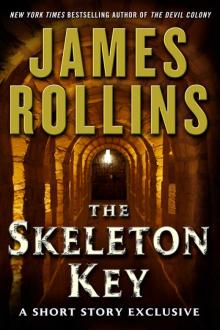 The Skeleton Key
The Skeleton Key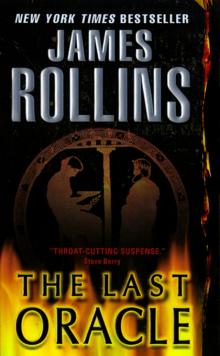 The Last Oracle
The Last Oracle The Judas Strain
The Judas Strain Black Order
Black Order Sandstorm
Sandstorm Ghost Ship
Ghost Ship The Devil Colony
The Devil Colony Subterranean
Subterranean The Doomsday Key
The Doomsday Key The 6th Extinction
The 6th Extinction Bloodline
Bloodline Jake Ransom and the Howling Sphinx
Jake Ransom and the Howling Sphinx The Midnight Watch
The Midnight Watch Map of Bones
Map of Bones The Demon Crown
The Demon Crown Deep Fathom
Deep Fathom Sigma Guide
Sigma Guide Kowalski's in Love
Kowalski's in Love Jake Ransom and the Skull King's Shadow
Jake Ransom and the Skull King's Shadow Excavation
Excavation The Seventh Plague
The Seventh Plague Altar of Eden
Altar of Eden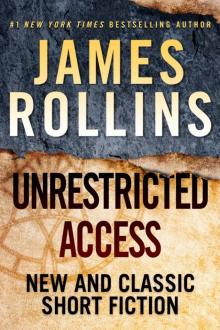 Unrestricted Access: New and Classic Short Fiction
Unrestricted Access: New and Classic Short Fiction Indiana Jones and the Kingdom of the Crystal Skull
Indiana Jones and the Kingdom of the Crystal Skull Crucible
Crucible The Eye of God
The Eye of God The Bone Labyrinth
The Bone Labyrinth The Last Odyssey: A Thriller
The Last Odyssey: A Thriller Unrestricted Access
Unrestricted Access Amazonia
Amazonia Blood Brothers: A Short Story Exclusive
Blood Brothers: A Short Story Exclusive Map of Bones: A Sigma Force Novel
Map of Bones: A Sigma Force Novel The Skeleton Key (sigma force)
The Skeleton Key (sigma force)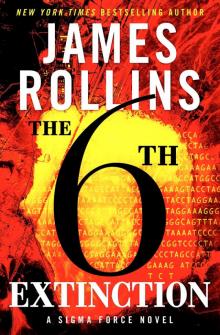 Sigma Force 10 - The Sixth Extinction
Sigma Force 10 - The Sixth Extinction Innocent Blood
Innocent Blood Map of Bones sf-2
Map of Bones sf-2 The Eye of God: A Sigma Force Novel
The Eye of God: A Sigma Force Novel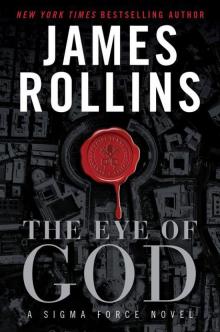 The Eye of God: A Sigma Force Novel sf-9
The Eye of God: A Sigma Force Novel sf-9 The Pit
The Pit Indiana Jones and the The Kingdom Of The Crystal Skull
Indiana Jones and the The Kingdom Of The Crystal Skull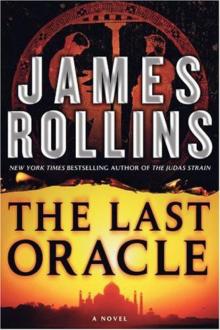 The Last Oracle (2008) sf-5
The Last Oracle (2008) sf-5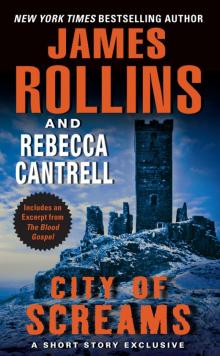 City of Screams
City of Screams The Doomsday Key and The Last Oracle with Bonus Excerpts
The Doomsday Key and The Last Oracle with Bonus Excerpts The Judas Strain sf-4
The Judas Strain sf-4 Blood Infernal
Blood Infernal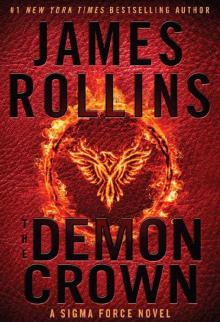 The Demon Crown: A Sigma Force Novel
The Demon Crown: A Sigma Force Novel War Hawk: A Tucker Wayne Novel
War Hawk: A Tucker Wayne Novel SANDSTORM sf-1
SANDSTORM sf-1 Bloodline: A Sigma Force Novel
Bloodline: A Sigma Force Novel Amazonia: a novel
Amazonia: a novel The Last Oracle: A Sigma Force Novel
The Last Oracle: A Sigma Force Novel City of Screams (the order of the sanguines)
City of Screams (the order of the sanguines)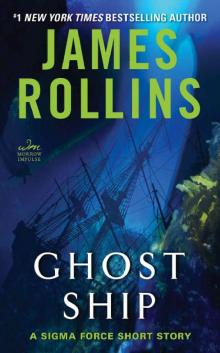 Ghost Ship: A Sigma Force Short Story
Ghost Ship: A Sigma Force Short Story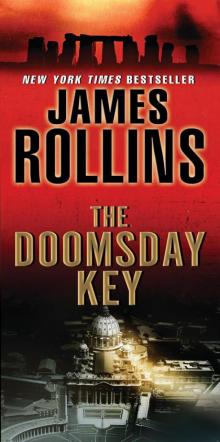 The Doomsday Key: A Sigma Force Novel
The Doomsday Key: A Sigma Force Novel